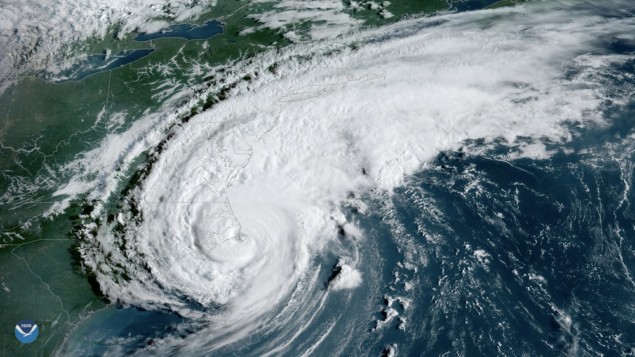This story is part of Covering Climate Now, a global collaboration of more than 250 news outlets to strengthen coverage of the climate story

Scientists have criticized the US government for politicizing weather forecasts from the National Weather Service (NWS) following a dispute over the potential path of Hurricane Dorian. The acting chief scientist of the National Oceanic and Atmospheric Administration (NOAA), of which the NWS is part, is investigating whether the agency violated its policies and ethics over the issue. Meanwhile, the Democratic-led House of Representative’s committee on science, space and technology has announced its own investigation into the matter.
Dorian became a category five hurricane on 1 September just before making landfall on the Bahamas. Late in August, some of the charts created by the NWS indicated a small chance that a part of Alabama would experience high winds from the hurricane. On 1 September, President Trump tweeted that the state “would most likely be hit (much) harder than anticipated”. By the time of Trump’s tweet, however, the hurricane had swung north with NWS charts showing no impact on Alabama.
[The NWS] should be celebrated for communicating accurate information so important to the public
Alan Leshner
Responding to panicked calls from state residents, the branch of the NWS in Birmingham, Alabama, quickly tweeted that the state “will NOT see any impacts” from the hurricane. But the president refused to admit that he had been wrong. As proof, he revealed an NWS projection of Dorian’s cone of uncertainty together with an extra semicircle that was apparently drawn by a Sharpie pen. The added area covered the southeastern segment of Alabama, with Trump admitting that he did not know who added the semicircle.
According to the Washington Post, NOAA staff were instructed to “stick with official National Hurricane Center forecasts” in response to questions about the issue and not to “provide any opinion” on the President’s tweets. But an unsigned press release from NOAA, dated 6 September, stated that the agency had informed Trump “that tropical-storm-force winds from Hurricane Dorian could impact Alabama”. The release also excoriated the Birmingham NWS because, it stated, its tweet denying Trump’s information “spoke in absolute terms that were inconsistent with probabilities from the best forecast products available at the time”.
On 10 September, the New York Times reported that this press release was issued because commerce secretary Wilbur Ross had threatened to sack top NOAA personnel for allowing the NWS to contradict the president. Ross’s staff, however, have denied the threat. Meanwhile, the NOAA’s acting administrator Neil Jacobs told a meeting of weather forecasters in Alabama that no-one’s job was under threat with NWS director Louis Uccellini praising his Birmingham office for upholding “the integrity of the forecasting process”. Democratic Congressman Bill Foster of Illinois, the only physicist in Congress, tweeted that if the New York Times report is true then Ross “must resign” – a call that has also been made by at least one other Congressperson.
Safety first
Scientists have come out in support of the NWS. Alan Leshner, interim chief executive of the American Association for the Advancement of Science, says that the NWS “should be celebrated for communicating accurate information so important to the public [and] not asked to change a weather forecast in reaction to any political pressure”. The American Meteorological Society notes in a statement that it “fully supports” the NOAA “who consistently put the safety of the American public first and foremost”.
Meanwhile, NOAA’s acting chief scientist, Craig McLean, is investigating whether the agency’s unsigned statement violated the agency’s policies and ethics. In an e-mail message to staff, he called the NOAA’s response to the issue a “danger to public health and safety”.



